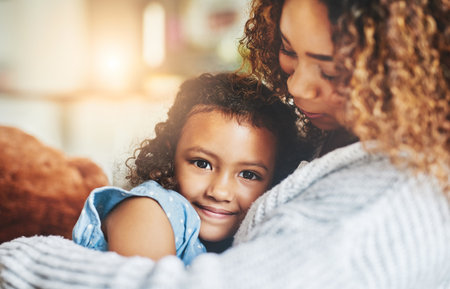The Importance of Colour in Childhood Environments
In the UK, the design of a child’s bedroom is more than just an aesthetic choice—it plays a significant role in their emotional well-being and overall development. British parents and carers are increasingly aware that the colours chosen for these personal spaces can have a profound impact on mood, behaviour, and even sleep patterns. With our often unpredictable weather and long winters, creating a warm, welcoming environment indoors becomes especially important for children. Research in colour psychology suggests that different hues can evoke distinct emotional responses; for example, soft blues and greens may promote calmness and concentration, while vibrant yellows and oranges might inspire energy and creativity. Considering these effects within the context of British homes—where space is sometimes limited and natural light varies—makes it crucial to select colour palettes thoughtfully. Ultimately, mindful use of colour in children’s bedrooms not only supports their emotional health but also helps foster a nurturing environment where they can thrive.
2. Understanding Colour Psychology: A British Perspective
When considering the design of children’s bedrooms in the UK, it is essential to understand how colour psychology can influence emotional health. Research conducted by British institutions such as the University of Sussex and the Colour Group (Great Britain) highlights that colours are not just aesthetic choices but also powerful psychological tools. For instance, Dr. Anna Franklin from Sussex notes that “children are particularly susceptible to colour cues, which can affect their moods and behaviour.” Local experts like interior designer Sophie Robinson advocate for mindful use of colour, suggesting that subtle differences in tone and shade can evoke distinct feelings in children.
Psychological Impact of Key Colours in UK Children’s Bedrooms
| Colour | Psychological Impact | UK-Based Expert Commentary |
|---|---|---|
| Blue | Calming, promotes concentration and restful sleep | Recommended for children with anxiety or sleep difficulties (British Psychological Society) |
| Yellow | Stimulating, fosters creativity but can be overwhelming if too bright | Best used as an accent; overuse may cause agitation (Sophie Robinson) |
| Green | Soothing, associated with balance and reassurance | Popular in nurseries for its natural, restorative effect (University of Surrey study) |
| Purple | Sparks imagination, linked to sensitivity and introspection | Avoid overly dark shades to prevent melancholy mood (Child Mind Institute UK branch) |
| Red | Energising, increases alertness but may heighten aggression or stress levels | Use sparingly, especially for younger children (NHS guidelines) |
| Neutral Tones (grey, beige) | Create a sense of calm and versatility; may lack stimulation if overused | Combine with colourful accents for best results (British Institute of Interior Design) |
Cultural Considerations in the UK Context
The British approach tends to favour balance and moderation. While trends from Scandinavian or American sources might embrace bold palettes, UK-based experts often recommend softer tones suited to the country’s natural light conditions and cultural preference for understated elegance. The NHS further suggests that parents involve children in selecting bedroom colours to foster a sense of autonomy and comfort.
In summary, understanding colour psychology from a British perspective means recognising both scientific insights and local preferences. Thoughtful application of these principles can create bedrooms that support emotional wellbeing throughout childhood.

3. Choosing the Right Colours for Emotional Wellbeing
Selecting the appropriate colours for a child’s bedroom is a nuanced process that goes beyond simply choosing a favourite shade. In the UK, there is a growing awareness of how colour can impact emotional health, and many parents now seek to create spaces that both soothe and support their children’s development. When considering which hues to use, it is essential to balance personal preferences with established psychological insights and cultural attitudes.
Practical Guidelines for Colour Selection
For calming environments, especially for children prone to anxiety or overstimulation, gentle blues, soft greens, and muted earth tones are popular choices across British homes. These colours echo the natural landscape and are often associated with tranquility and security—a sentiment deeply rooted in local culture. Conversely, for children who need motivation or energy, brighter accents such as yellows or coral can be introduced sparingly to invigorate without overwhelming the senses. It is generally advised in the UK to avoid overly vibrant reds in large areas, as these may heighten agitation or restlessness.
Considering Individual Needs and Preferences
No two children are alike; thus, it is beneficial to involve them in the decision-making process where possible. Encouraging children to select from a curated palette not only gives them agency but also ensures the chosen environment feels personal and comforting. For those with sensory sensitivities, opting for matt finishes rather than glossy ones helps reduce glare and visual noise—an approach that aligns with many British design sensibilities favouring understated elegance.
Integrating Tradition and Modern Understanding
While pastel pinks and blues have long been traditional choices in the UK, modern families are increasingly open to gender-neutral palettes like soft greys, sage greens, and ochres. These shades foster inclusivity while maintaining the restful atmosphere that supports healthy sleep patterns and emotional regulation. Ultimately, thoughtful colour selection—guided by both psychology and an understanding of British cultural context—can transform a child’s bedroom into a nurturing space tailored to their unique emotional needs.
4. Incorporating Heritage and Personal Identity
Designing a child’s bedroom offers an opportunity to celebrate both British heritage and the unique character of your child. By weaving traditional elements with aspects of your family story, you create a room that is emotionally supportive, meaningful, and distinctly personal.
Reflecting British Heritage in Bedroom Design
The palette, patterns, and materials you select can subtly echo the essence of British culture. Classic shades like duck egg blue, sage green, or soft grey are not only calming but also reminiscent of quintessential British interiors. Incorporating tartans, Liberty prints, or even vintage floral wallpapers can evoke a sense of tradition while maintaining a modern feel.
| Element | British Inspiration | Emotional Benefit |
|---|---|---|
| Colour Palette | Duck egg blue, sage green, mustard yellow | Calmness, comfort |
| Fabrics & Patterns | Tartan blankets, Liberty floral prints | Nostalgia, belonging |
| Decorative Touches | Handmade bunting, vintage toys | Security, identity formation |
Celebrating Family Traditions and Stories
Integrating heirlooms or handmade crafts into the room design brings family history to life. A patchwork quilt made by a grandparent or framed photographs from family holidays serve as daily reminders of connection and love. These personal touches reinforce your child’s sense of belonging and support their emotional wellbeing.
Encouraging Self-Expression Within Tradition
A child’s bedroom should also reflect their evolving interests. Letting them choose accent colours or display their artwork alongside traditional motifs bridges heritage with individuality. This approach cultivates pride and ownership in their space, supporting autonomy and self-confidence.
Practical Tips for Blending Heritage and Identity
- Select foundational colours rooted in British tradition as a calming base.
- Add accessories that tell your family’s story—photographs, keepsakes, or handcrafted items.
- Create flexible spaces for your child to display favourite books, drawings, or collections.
- Invite your child to contribute to décor decisions within the framework of heritage-inspired choices.
This thoughtful blend of cultural roots and personal expression transforms a bedroom into a nurturing environment that supports both emotional health and a strong sense of identity.
5. Practical Tips for Parents and Caregivers
When bringing colour psychology into your childs bedroom, a considered and practical approach is key—especially within the British context, where homes often vary in size and natural light. Here are some actionable tips to help you make thoughtful choices that support your child’s emotional wellbeing while remaining budget-friendly and sustainable.
Start with Observation and Conversation
Before choosing any colours, observe how your child responds to different shades in their daily life. Engage them in conversations about their preferences, favourite places, or even their artwork. This collaborative approach ensures the room reflects their personality and creates a sense of ownership.
Utilise Paint and Accessories Strategically
You don’t have to repaint the entire room to achieve a positive effect. Consider using calming blues or gentle greens on one feature wall, then complement with bedding, cushions, and curtains in harmonious hues. For rented properties common across the UK, removable wall decals or framed prints offer flexibility without risking deposit deductions.
Sustainable Choices for Eco-conscious Families
Opt for low-VOC or natural paints to reduce chemical exposure—a benefit for both children and the environment. Sourcing second-hand furniture or upcycling existing pieces not only saves money but also allows for creative customisation using eco-friendly paints or stains.
Cost-effective Ideas for Every Budget
British high streets and charity shops can be treasure troves for affordable décor items in suitable colours. Small changes like lampshades, rugs, or bunting can make a big difference without a hefty price tag. Seasonal sales at larger retailers also provide opportunities to update soft furnishings economically.
Adaptation for Shared and Small Spaces
If siblings share a bedroom, use distinct colour zones (perhaps through bedding or storage boxes) to give each child a sense of identity while maintaining overall harmony. In smaller homes or flats, lighter shades can help rooms feel more spacious and airy—an important consideration in many British properties.
Review and Revise as Children Grow
Children’s tastes and emotional needs will change over time. Plan for adaptability by selecting neutral base colours that can be refreshed with new accessories as they grow older, ensuring the space continues to support their wellbeing at every stage.
6. Navigating Trends and Timelessness in Kids’ Room Design
When designing children’s bedrooms, it’s tempting to follow the latest colour trends sweeping through the UK—from muted Scandi palettes to bold, playful murals inspired by British high street brands. While these choices can offer a fresh look and immediate satisfaction, it’s important to weigh their long-term impact on a child’s emotional wellbeing. Children’s preferences change rapidly, but their need for comfort and security is constant. Striking a balance between trendy aesthetics and timeless design means focusing on colours that support both current tastes and enduring emotional health.
Trendy shades like sage green, blush pink, or navy blue are currently popular across UK homes, often promoted for their calming or versatile qualities. However, before committing to a fashion-forward palette, consider how these colours might influence mood as your child grows. For example, soft greens and blues have been shown to promote relaxation and focus—a smart choice for both young children and teenagers preparing for exams. Neutral backgrounds with pops of trend-led colour via accessories (cushions, bedding, wall art) allow easy updates without the need for frequent redecorating.
It’s also worth considering the unique character of British homes—Victorian terraces, modern flats, or countryside cottages each lend themselves to different light levels and atmospheres. The same shade may feel warm and inviting in one setting but cold or overwhelming in another. Test paint samples at different times of day to see how natural light interacts with your chosen colours.
Ultimately, involving children in the design process helps ensure their room reflects their personality while remaining supportive of their emotional needs. Guide them towards choices that are flexible: perhaps a feature wall in a favourite colour that can be repainted later, or removable wallpaper with patterns that can grow with them. Encourage creative expression through artwork or DIY decor that can be easily changed as interests evolve.
Balancing trendiness with timelessness is about more than aesthetics—it’s about creating a nurturing environment that adapts as your child develops. By thoughtfully selecting colour schemes grounded in psychological principles yet open to change, you’ll foster a space where children feel both secure and inspired for years to come.


